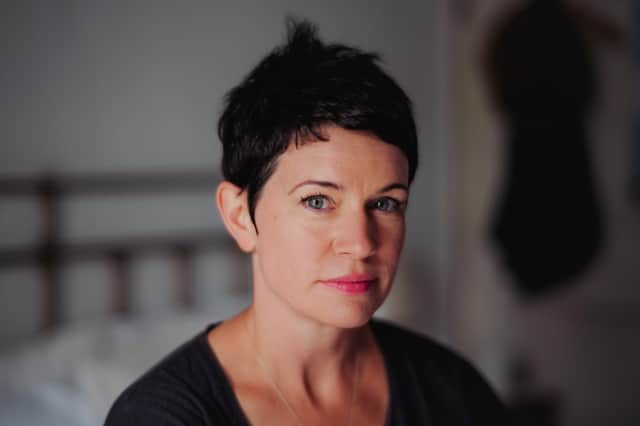Book review: Burntcoat, by Sarah Hall


There will, in due course, be a plague of pandemic novels. In fact there always has been. Some are eerily prescient, such as Ewan Morrison’s startling and poignant novel, How to survive everything, which was more about survivalists with a virus, or the idea of it, in the background. In terms of serious literary talent we now have Sarah Hall’s Burntcoat, a novel featuring a “novavirus” but also about so much more. It is a rending read, and all the better for that. The characters are so deftly done, in all their ambiguities, that the catastrophe is actually meaningful. The narrator, a lauded sculptor called Edith Harkness, has been commissioned to create a piece as a national memorial to those who died during this iteration of infection. But that is in the future at the very beginning of the novel. In its pasts, nobody knows what is coming.
Hall deploys an effective jittery jump-cut to the passage of time. The opening line is “those who tell stories survive”, a phrase from Edith’s mother, Naomi, with Edith pondering if she really meant that, or whether it was a confused recollection of “those who survive tell stories”. By page two, after this memory, we are in “today” and Edith is 59 years old, which is old for “carriers”. But the narrative then sworls between childhood, becoming a student in art college and both a disastrous relationship and learning unfeminine skills in metalworking and blacksmithing, to a bursary to study with a Japanese sculptor who works with burnt wood, to a unexpected romance with a Turkish man called Halit. Then the virus sneaks and snakes its way into the proceedings. Alongside this we have Edith’s contemporary retrospection on what the virus meant.
Advertisement
Hide AdIn most reviewers’ grab-bag of comparisons is Angela Carter. It might have been used here (art, mangled language, mothers, Japan, the body, libido, a looming horror) but Hall quietly nixes the idea. Naomi had been a novelist before a brain haemorrhage which scrambled her synapses. She manages to write a final work, The Reddening, and is posthumously lauded. “They’ve re-assessed her writing”, her daughter tells us, “the label of Gothic stripped off like cheap varnish. Karolina once said to me the term is used for women whose work the establishment enjoys but doesn’t respect”. I can imagine the authors Sarah Perry, Jenni Fagan, Jessie Burton, Susanna Clarke and Eowyn Ivey (and many others) joining in a round of applause.


So what other writers might give us a guide to Hall’s work? Once the relationship with both the virus and Halit has begun, Edith says he “laughed again, shocked by the frankness, and caught between discomfort and pleasure” when they are discussing pornography. The book is frank, and had as much about menstruation as copulation. It seems more the descendant of writers like Anaïs Nin and Georges Bataille in its yoking of the erotic and the violent, the morbid and the sublime. But: both prude and trigger warning, it really is frank. That the body is a source of joy and a site of decay is integral to the novel’s meaning. You might want to close your eyes at the sex scenes, but you’ll definitely want to when the descriptions of necrosis and suffering hove into view.
Cleverly, the action takes place in a slightly off-skew version of reality. This is not a documentary, but a novel. When the Prime Minister speaks to the nation “she looked gaunter, greyer; within weeks some private cosmeticist had whitened her hair”. I rather like that the current incumbent of that office is denied a place in fictional histories. But there are enough indicators which every reader will remember that tethers the narrative to what has been happening; stockpiling, lockdowns, simmering tensions turning into angry outbursts, the military being used to shore up a buckling health service to make it – awful word – relatable. This is a novel with a “Welsh doctor who has cut the bottom off a large water cooler and placed it over his head as a mask… he would be among the first medical staff to die”.
Personally, I found one of the most admirable things about Burntcoat the almost metaphysical musings on the virus. There is an aghast admiration for its adaptability, how it is “perfectly composed, star-like, and timed for the greatest chaos, for transmission across borders, replication, creating galaxies of itself". This is a book with profound tenderness about how one cares for those who are approaching the unknown, and with a quiet anger at how “our substance is still the same; even with improving agents. We are our own worst tendencies. We remain in our cast”. This applies particularly to the parallelism between Naomi’s condition and dealing with the effects of the virus. It’s not as if suffering is something new in the universe.
“This is not the story. This has never been the story”, thinks Edith. Hall skewers the idea of the pandemic as an arc, a beginning, middle and end. There will be more that attempt to understand The Curious Years, but Hall has set a bar, and few will be as finely wrought, intellectually brave and emotionally honest as this is.
Burntcoat, by Sarah Hall, Faber & Faber, £12.99
A message from the Editor
Thank you for reading this article. We're more reliant on your support than ever as the shift in consumer habits brought about by coronavirus impacts our advertisers.
If you haven't already, please consider supporting our trusted, fact-checked journalism by taking out a digital subscription at https://www.scotsman.com/subscriptions